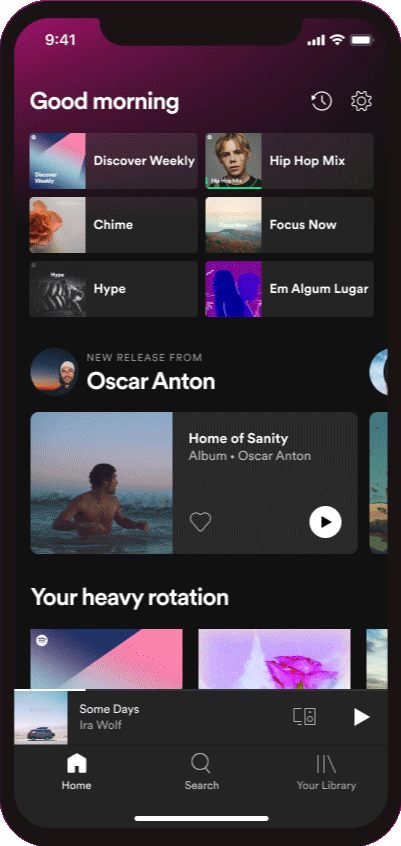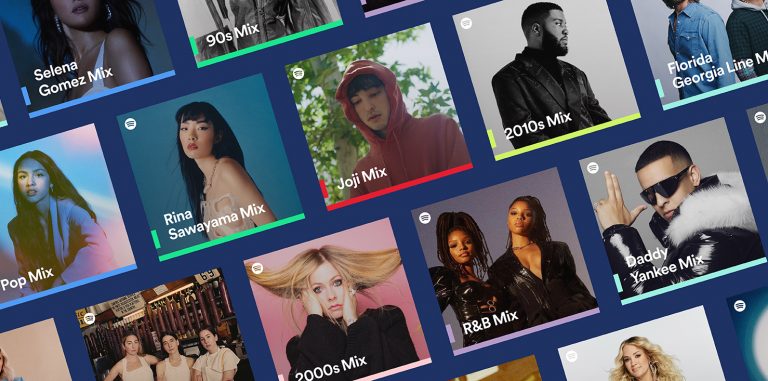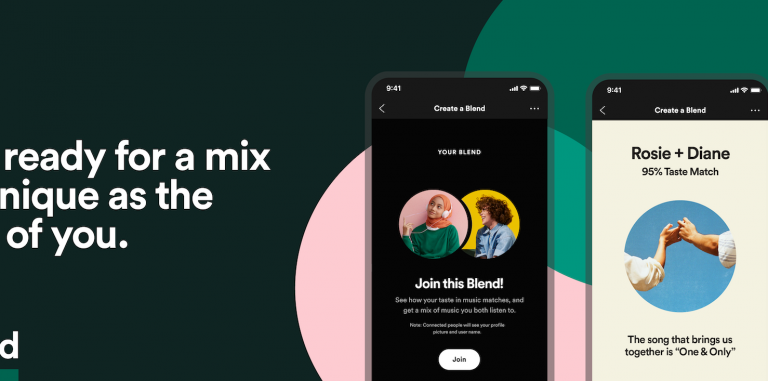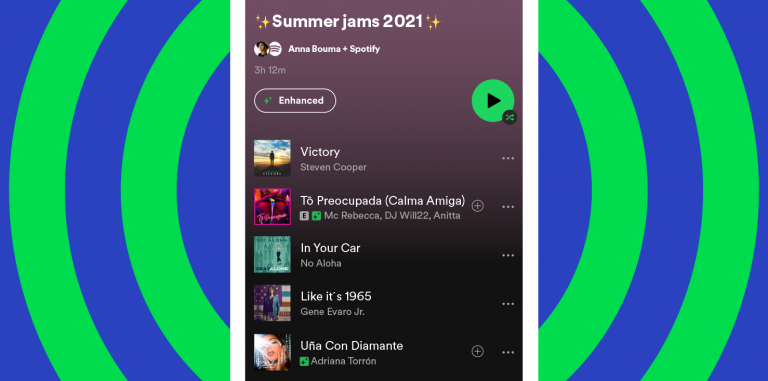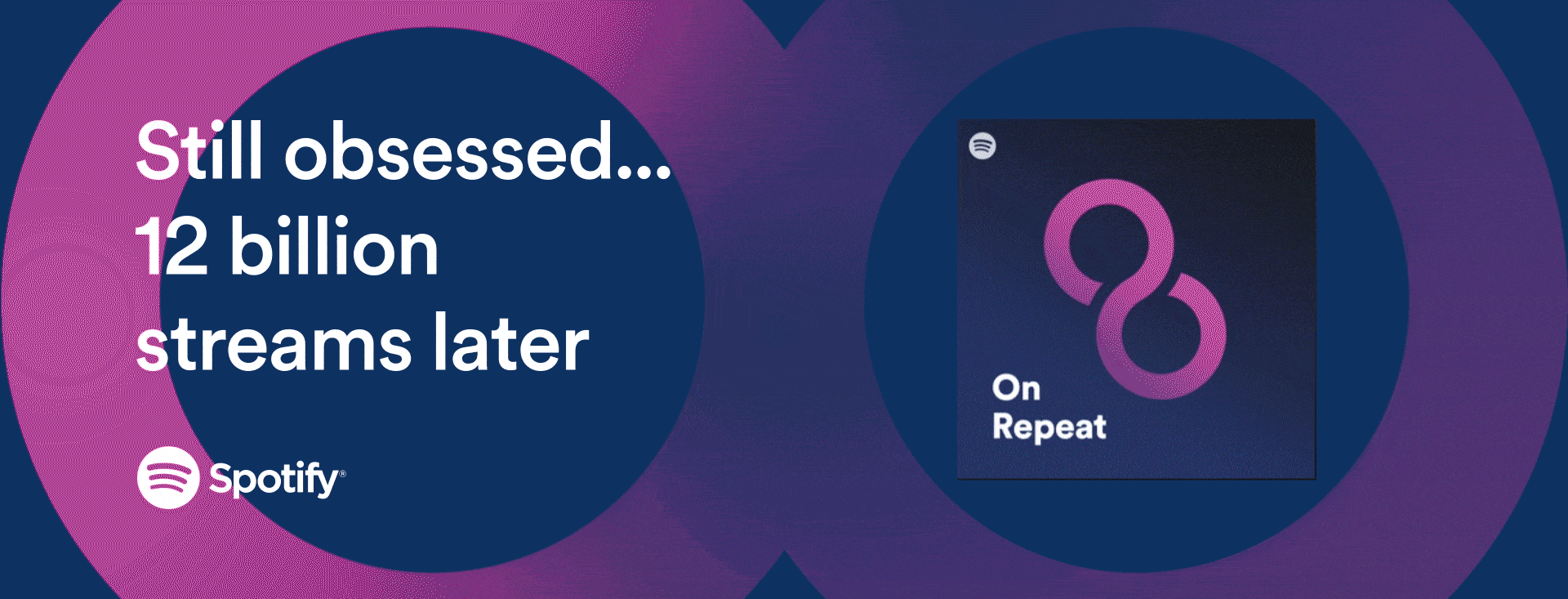
Adding That Extra ‘You’ to Your Discovery: Oskar Stål, Spotify Vice President of Personalization, Explains How It Works
Mondays and Fridays are eagerly anticipated by music lovers on Spotify who are looking to uncover new artists. Each Monday, Discover Weekly, a playlist that serves listeners with tracks they might like based on their past listening histories, is updated. Friday is Release Radar day, when the playlist refreshes with brand-new songs from a user’s favorite artists. And there’s even more personalization happening daily on Spotify across playlists our editors curate and playlists users create.
In fact, personalization begins right within the home page, shortly after a new user downloads and signs up for Spotify. New users are prompted to select a few of their favorite artists. From that moment on, the app begins to spin up creators a listener might love based on those they’re already familiar with. “But that only accounts for a small portion of how we personalize the Spotify listening experience,” said Spotify’s Vice President of Personalization, Oskar Stål, in an interview with For the Record.
How personalization came to life
Personalization is what it sounds like: It ensures that the content you receive on Spotify is tailored to you based on the audio you love. It’s now regarded as key to the Spotify experience—but Spotify did not always focus there. Spotify was originally created 15 years ago to function more like a library, where you could go and play the songs you were interested in that you already knew about. But over time, our engineers realized that “you enjoy Spotify more if you discover more, and most people don’t have time to discover on their own,” said Oskar.
“Perhaps you’re a 46-year-old dad with three kids and no time to discover music by yourself,” Oskar joked, gesturing to himself, “or a student looking for inspiration. It’s most helpful when you’re served something up and know it will be a mix of what you like and what you might like. Then you’ll stay for more.”
Personalization, he explains, was an empowering experience for listeners who didn’t have the time or knowledge to create endless unique playlists for every dinner party or road trip. It opened up discovery on a broader level, enabling hundreds of artist discoveries per person per year. And most important, personalization helps create a better app experience because it ensures that people want to be on the app—but not spend all their time there. Spotify’s approach is to ensure listeners have a “fulfilling content diet.”
“If we really wanted to make you stay on the app three more minutes, we would play your favorite song,” Oskar explained. “All we’d ever have to do is play your favorite 20 songs on a loop. But that would mean you’re not discovering anything, and you’d eventually get tired and bored of the audio experience.”
Spotify operates several personalization features within the app for listeners to enjoy beyond the classics like Discover Weekly and Release Radar. Earlier this year, we debuted Spotify Mixes sorted into genres, artists, or decades with music a listener loves or will love. Just last month, we introduced Blend, which merges two listeners’ taste profiles, creates a playlist that combines both of their favorites, and allows them to share the results on social media. And most recently, we launched Enhanced playlists, a feature users can toggle on or off that allows Spotify to suggest new songs that might fit in well to a user’s custom-made playlist.
All this is in addition to what we call our “algotorial” playlists: sets of songs our editors put together to evoke a certain mood or moment that are also tailored to the individual user. “Songs to Sing in the Car might not look personalized, but it is,” said Oskar. “Each person is seeing music that fits that categorization, but that is also in line with what they enjoy listening to. In fact, there isn’t just one Spotify experience. There’s more like 365 million different experiences—one for each user—that’s deeply personalized to their wants and needs.”
How does personalization actually work?
The answer is machine learning, a complex code-based system with thousands of inputs, all laddering up to one song recommendation, done faster than the blink of an eye. But Oskar broke it down:
“Imagine you and another person have similar music tastes. You have four of the same top artists, but your fifth artists are different. We would take those two near-matches and think, ‘Hmm, maybe each person would like the other’s fifth artist’ and suggest it. Now imagine that process happening at scale—not just one-on-one, but thousands, millions of connections and preferences being considered instantaneously, and always updating. Every day, half a trillion events, whether they are searches, listens, or likes, take place on Spotify, powering and guiding our machine learning system.”
Machine learning technology has raced forward as Spotify has matured, with enhancements we only once only dreamed of now becoming reality. This reality, too, affects where we can go with personalization and what we can serve up to listeners. “Breakthroughs in machine learning have really allowed us to rethink how we can help users discover new audio content. While in many instances machine learning has remained focused on solving for the immediate click—‘You like this song. Let me offer you more of the same kind of music’—we’re now able to better understand content and the ways listeners and creators relate to it.”
The future of Personalization at Spotify
Podcasts, in particular, pose a significant opportunity, in part because of user input: It takes a bit longer to determine whether you like a particular show or episode or not—much more so than the 20 seconds most people take to pass judgment on a song. But as Oskar points out, we already had a great head start helping you discover podcasts on Spotify: “We’re investing heavily in developing the world’s best-recommendation algorithms to power connections between podcasters and listeners. We already have a really good system in place thanks to over 10 years recommending music, and it turns out that we can even predict what kinds of podcasts a listener might enjoy based on their taste in music.”
The impact—and potential—of personalization spreads even further. As enjoyable and relevant as personalization can be for listeners, it’s vital for creators who are looking to grow a fan base. Spotify machine learning has been trained to identify potential matches across artists, genres, and even countries.
“Personalization is really a two-way street,” said Oskar. “The insights we’ve gathered allow us to see that there might be a Finnish artist who has music that would be a hit in Latin America. And we have the opportunity to bring that music to those listeners in Latin America through our personalization channels. This then introduces the artist to a more global audience that might not have been able to discover them on their own.”
Just as Spotify didn’t begin with the personalization capabilities listeners come to expect now, the personalization story also doesn’t end here. “Personalization is essential to the listening experience,” Oskar reminds us. “What we’re really working towards is creating a more holistic understanding of listeners by optimising for long-term satisfaction rather than for short-term clicks, offering them a more fulfilling content diet. Listeners are on a journey of discovery, and we want to help them have the best experience as they discover the millions of audio content available on Spotify.”



